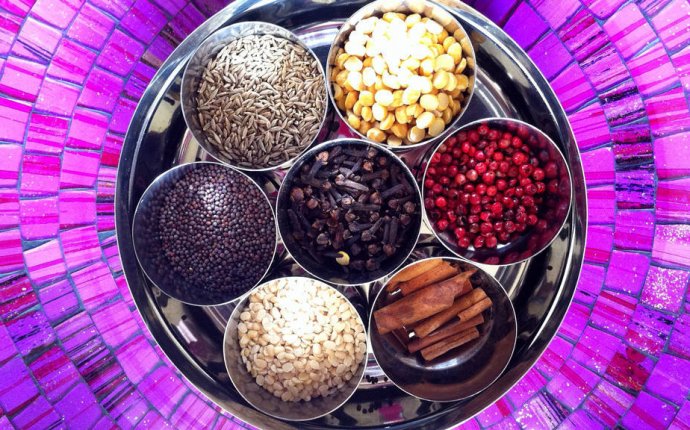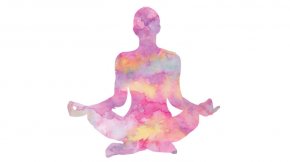
All About Ayurveda
 Ayurveda explores the science behind life itself. Emma tells us everything we need to know about this ancient health system.
Ayurveda explores the science behind life itself. Emma tells us everything we need to know about this ancient health system.
With so much information ‘out there’ at the moment regarding health and wellness, it can be difficult to know which advice we can trust and which is merely another fad. Generally though, the most reliable advice is the kind that is tried and tested and has stuck around for a very long time.
The Science of Life
Translated as the ‘Science of Life’, (Ayur = Life, and Veda = Knowledge). Ayurveda is one of the most ancient health systems and is closely linked to yoga. As the name implies, this system explores the science behind life itself, what it’s made of, how it works, and the multitude of physical and energetic tools that can be applied in order to realise it more fully.
Much like other Eastern medical systems such as Traditional Chinese Medicine, Ayurveda seeks to prevent disease, instead of merely looking to cure symptoms of illness. This system insists that each person is simultaneously unique and a vital part of nature It sees health as a state of being: balanced and in harmony with our internal and external environment. Ayurveda considers a person as a whole, determining that much of the disease we may experience in the body starts as ‘dis-ease’ in the mind. An Ayurvedic treatment will never simply look at acute physical symptoms and treat one particular area. For example, if you ask an Ayurvedic doctor to treat a painful knee, it won’t just be the knee that receives attention. Your whole being, your digestive system, the amount of ojas (‘vital essence’) you currently have, your relationships, your lifestyle and the health of your mind, body and spirit are all scrutinised, as they are all likely to have an impact upon the gross external layer of the physical body.
If you ask an Ayurvedic doctor to treat a painful knee, it won’t just be the knee that receives attention. Your whole being (your digestive system, relationships, lifestyle and the health of your mind, body and spirit) will be scrutinised.
Herbs, oils, spices, breathing techniques, foods, mantras, yoga postures, exercise, cleansing techniques, dietary advice, visualisation and many other prescriptions ranging from the seemingly normal to the incredibly unusual are considered when working with an Ayurvedic physician.
The Origins of Ayurveda
The term 'Ayurveda' was first mentioned in the Vedic texts, thought to have existed for more than 1200 years, whereby the gods are said to have transmitted this valuable life-preserving knowledge to rishis and seers. They shared this knowledge orally at first until it was written down many years later. Ayurveda is also a derivative of the Tantric lineage, both Tantra and Ayurveda deal with the energies of the universe. They consider that each being has elements of the universe within them and that just as the world around us is comprised of earth, fire, water, air and ether, so too, are we. By 400 AD it is said that Ayurvedic texts were translated into Chinese literature and the methods spread across the East.
 Some of the oldest Ayurvedic texts include the Susrutha Samhita and the Charaka Samhita, describing ancient theories behind the human body, different energetic systems, as well as therapeutic guidance for many different ailments. One of the key ways to recognise that Ayurveda stems from Tantra, is that it considers repression of natural urges, emotions and thoughts as one of the primary causes of illness and that expression, freedom and truth lead to health and vitality.
Some of the oldest Ayurvedic texts include the Susrutha Samhita and the Charaka Samhita, describing ancient theories behind the human body, different energetic systems, as well as therapeutic guidance for many different ailments. One of the key ways to recognise that Ayurveda stems from Tantra, is that it considers repression of natural urges, emotions and thoughts as one of the primary causes of illness and that expression, freedom and truth lead to health and vitality.
Many of the global complementary therapies we use today are derived from Ayurveda, including many types of massage and aromatherapy.
The Eight Branches of Ayurveda
Similarly to Patanjali’s Eight Limbs of Yoga, there are eight different branches to Ayurveda:
1Kaaya Chikitsa: Internal medicine
Via methods of purification, detoxification and rejuvenation, this branch looks at healing the body from the inside-out. It is said that the body knows how to heal itself if we are intuitive enough to give it what it needs. The Shat Kriyas (‘Five Actions’) are often used as treatments here, as a way to cleanse the body.














